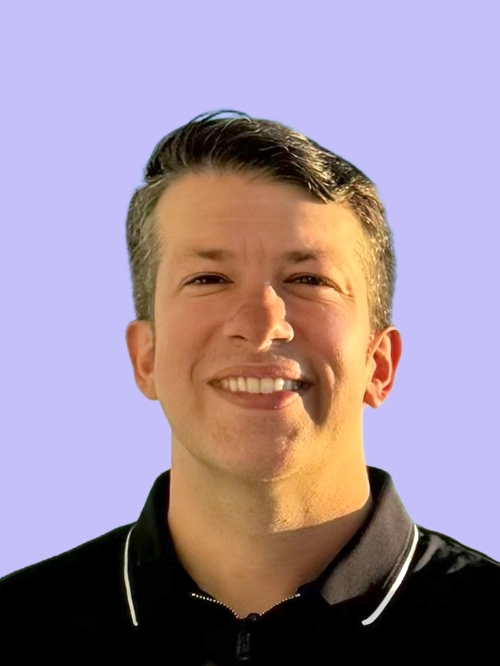
Mike Lovell is the SVP of Marketing at Class. He has dedicated his career to technology and the applications that can innovate the way people live and learn.

Mike Lovell is the SVP of Marketing at Class. He has dedicated his career to technology and the applications that can innovate the way people live and learn.

Evident across the higher education landscape is the reality that student demographics are changing. Traditional, on-campus learner enrollment is expected to drop off as early as 2025, and post-pandemic shifts and hurdles have caused institutions to explore adapting to new higher education environments. Among these new environments is the continued prevalence and increasing popularity of online classroom programming.
According to the Lumina Foundation, 37% of college students are 25 or older, and 46% are first-generation students. Alongside this increase in nontraditional students are additional lifestyle-related obstacles which make in-person, traditional learning modalities harder to accommodate. Recently, Class convened a panel of online programming experts to discuss vital aspects of successful virtual classrooms. Their insights emphasize the importance of our three pillars, and we’ll provide direct quotes throughout our series to accentuate real-world applications.
As Dr. Joshua Kim, Director of Online Programs and Strategy for Dartmouth College, points out, “We’ve learned that our higher education institutions work very well for some of our students and not for others. We need to recognize that.”
Dr. Patrice Torcivia Prusko, Director of Learning Design, Technology, and Media for Harvard University Graduate School of Education, adds, “I think there’s a lot of tension in a lot of universities of decreasing revenues and looking at increasing class sizes or changing teaching load in order to make up for shifts in revenue and shifts in student registrations. It’s a very complex problem, and we really need to look at the entire system in order to really answer that.”
With this shift occurring—along with the adjoining tensions—now is a crucial time for campus leadership to refine the online classroom experience that drives ROI for both the student and the institution. This has informed the three pillars of the new online experience. In the subsequent three blog posts of this series, we’ll explore each of the following areas of focus in greater detail:
Is your institution providing the right organizational structure? Does your virtual classroom promote accessibility and learner equity while delivering appropriate rigor? How are you tracking the degree to which these benchmarks are being met? We’ll explore answers to these questions, while also delivering key insights from online classroom experts. Dive into “The First Pillar of a Blueprint for Your Online Program’s Success: Quality Programs” to learn more.
“Part of that process is really thinking about keeping equity at the center of design and thinking about what does it mean to design for those learners who are at the margin. And if we design for the learners at the margin, we’re really designing and creating a better experience for everyone.”DR. PATRICE TORCIVIA PRUSKO, Director of Learning Design, Technology, and Media, Harvard University Graduate School of Education
When considering student engagement in online classrooms, is the technical experience all that matters? Is your institution exploring the classroom experience, the community experience, and the individual experience? Are resources set up to ensure your students are technically capable of navigating the virtual classroom? Are efforts to encourage socialization and non-classroom engagement present? What about ensuring online students have financial education, counseling availability, and other wraparound resources? We’ll discuss the multifaceted student experience, as well as ways to promote a holistic approach. Dive into “The Second Pillar of a Blueprint for Your Online Program’s Success: The Student Experience” to learn more.
“I can’t emphasize enough how much I believe in the importance of humanizing the space for online learning.”DR. ROZALIND JESTER,
Assistant Vice President of Strategic Innovation and Online Learning, Florida Southwestern State College
How can you encourage your faculty to optimistically accept this new challenge? Are you supporting your faculty with expert-level training? Does your upskilling help educators draw on experience in order to adapt to a new modality? Are your expectations built around a full understanding of faculty prioritization and the differing urgencies a tenured professor at a research-one institute has as opposed to a non-tenured adjunct instructor? These are the important factors we’ll investigate to ensure faculty are being set up for success—which, ultimately, helps yield overall online program success. Dive into “The Third Pillar of a Blueprint for Your Online Program’s Success: Faculty Flexibility” to learn more.
“[Faculty] all are stretched in a million directions. It’s really the job of institutional leadership to be not just thinking about the student wellbeing, but the educator wellbeing—and understand educators are no longer just faculty.”Dr. JOSHUA KIM,
Director of Online Programs and Strategy, Dartmouth College
In the subsequent series of blog posts, we’ll provide deeper detail into Class’s blueprint for online program success. The blueprint’s purpose is to guide your implementation of a best practice virtual classroom at your institution. This is a key resource for institutional leaders looking to keep pace with digital transformation and increase your institutional responsiveness. We hope this will serve as a helpful gauge to balance the effectiveness of your online program—for the institution, the educator, and the learner.
Are you ready to put the plan into action? Talk with a member of the Class team today, and let’s elevate the success of your online programming!

Mike Lovell is the SVP of Marketing at Class. He has dedicated his career to technology and the applications that can innovate the way people live and learn.

Mike Lovell is the SVP of Marketing at Class. He has dedicated his career to technology and the applications that can innovate the way people live and learn.
Get our insights, tips, and best practices delivered to your inbox

Sign up for a product demo today to learn how Class’s virtual classroom powers digital transformation at your organization.

Features
Products
Integrations